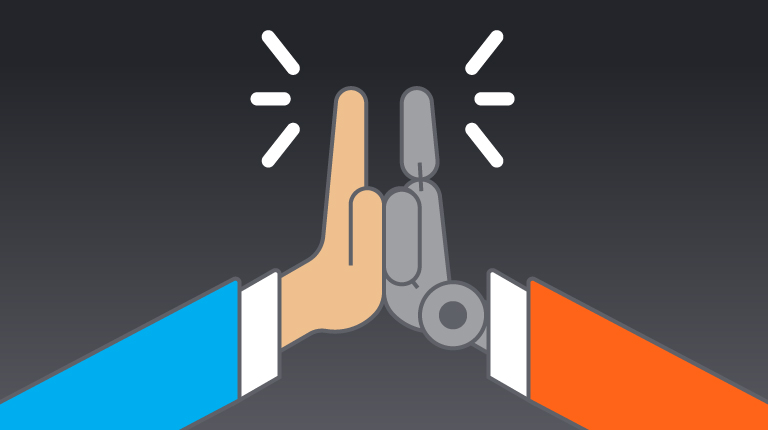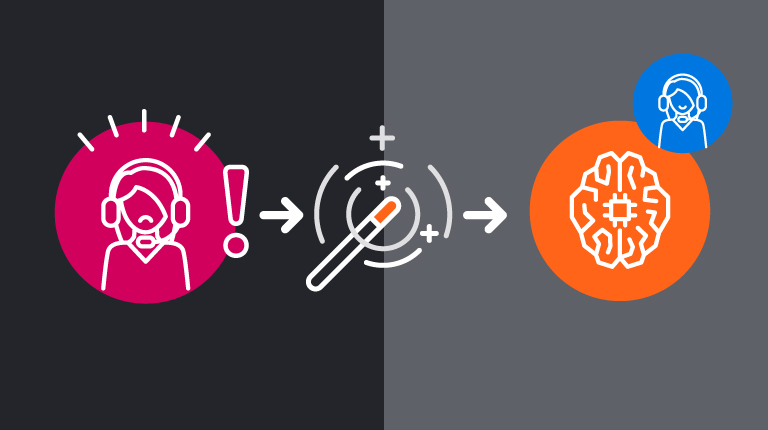We’ve talked in length about the reputation AI tends to have – overpowering and sometimes downright creepy. But, what’s not talked about enough is the fact that the importance of humans thrown into the mix can’t be understated. Without humans, every word uttered or typed has a certain emptiness to it, seeming – for lack of a better word – robotic.
And, when it comes to using these virtual assistants to assist your customers, it’s just as important that they interact with people in a way that’s authentic. What’s the only way to infuse this human element into AI, and in the process make AI more conversational? You guessed it – with humans! If we entirely take humans out of the loop, the technology won’t result in the outcomes that businesses are looking for, like increased cost savings, CSAT scores, and efficiency. In some sense, it’s no different than when a human takes on a task – it learns from experience and gets better at executing over time. So, in the same way humans learn from experience and other humans, so does AI.
1. Virtual Assistants Have a Lot to Learn
Although it’s come a long way, AI is still in its infancy. AI-powered Virtual Assistants are being used today in ways that show tremendous promise, but like any new employees, virtual assistants need people to learn from. You wouldn’t expect someone new to fend for themselves to figure out how to get a job done right, and a virtual assistant is no different.
Machine learning is the backbone of AI — the technique that gives AI the ability to learn from experience and the data that experience generates. So, virtual assistants need a constant feedback loop that allows them to learn. It is this continuous learning throughout the life cycle of processes that provides the ever-increasing benefits that businesses expect.
Think of it this way: people go to school as a foundation for success. While this education teaches them the basics, its practical work experience and guidance and training from others that ultimately helps people to develop specific skills and expertise. Think of virtual assistants in the same way — as students who still need human understanding and experience to complement its effectiveness.
2. Conversational AI is Complex
Humans, by nature, are complex and unpredictable, and it often takes another human to understand the nuances of conversation. For example, if a human answers a restaurant’s phone to take a reservation and asks the patron how many people will be in the party, a human knows, “My wife and me” means two. A virtual assistant, however, may not.
Too often in the customer service realm, callers are greeted by a virtual assistant programmed to only understand a limited set of inquiries. However, the majority of people’s questions often fall outside of this narrow scope of options and lead to a poor customer experience, leaving your customers frustrated and unhappy.
Issues like this can have some serious consequences. While Statista reports the global chatbot market is expected to reach $1.25 billion by 2025, a recent Gartner study found that 40 percent of bot/virtual assistant applications launched in 2018 will have been abandoned.
With humans supporting these AI-powered virtual assistants, the number of questions they can answer skyrockets. The difference: humans are able to discern messages that are impossible to translate with existing natural language processing (NLP) and speech recognition techniques, like sarcasm, slang, colloquial expressions or thick accents. Additionally, human brains are able to listen and understand through background noise — AI-powered virtual assistants aren’t so savvy…at least not yet.
3. AI-Powered Virtual Assistants Get by (with a Little Help from their Human Friends)
If you take a look at some of the most exciting applications of AI, it’s evident that when AI and humans work together, its impact is unmatched. From healthcare to finance to customer care, AI-powered virtual assistants are able to identify issues and suggest solutions, but know when to hand it off to a human to make adjustments and personalize accordingly based on the situation at hand. This process, in turn, trains the virtual assistant to become even stronger and more accurate the next time around.
It’s true: AI-powered virtual assistants will get smarter over time, but people aren’t going anywhere. In fact, humans will dictate whether or not these virtual assistants, and AI in general, is successful. As our needs change, jobs evolve and language gets muddled with slang, these virtual assistants will need an inside source to stay up to speed. With humanity as AI’s counterpart, our awe over it’s power will outpace our fear.




